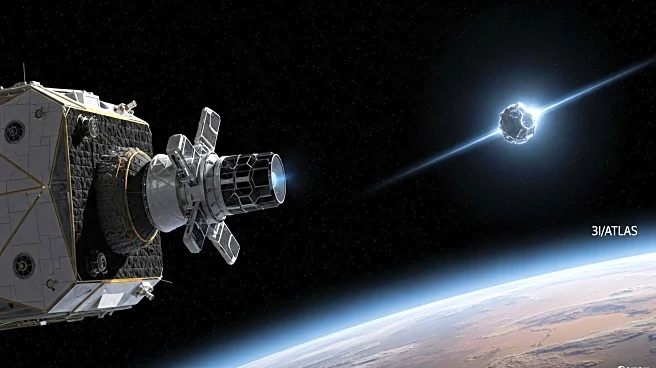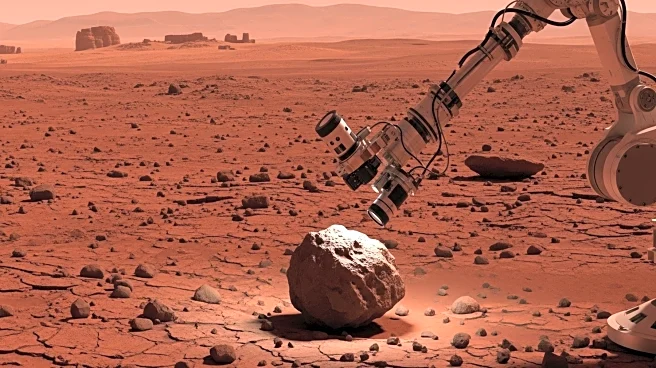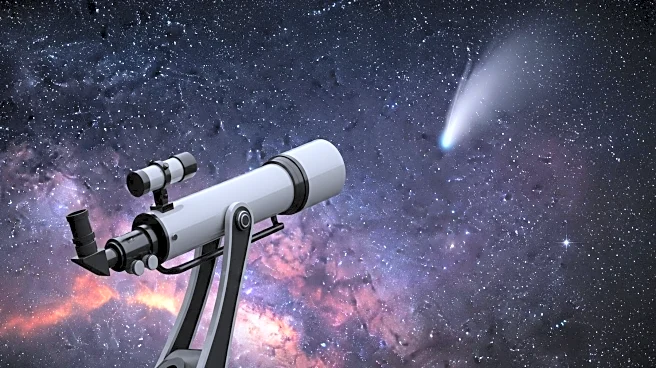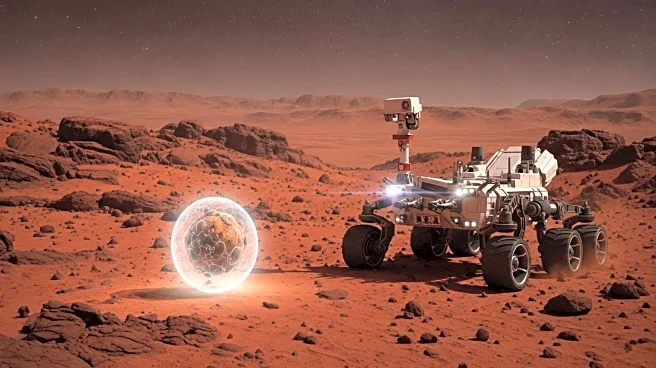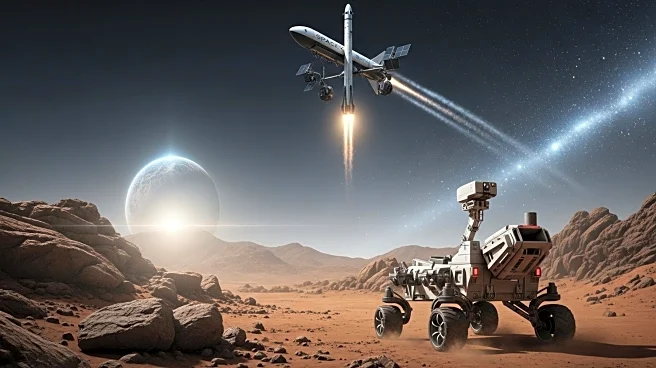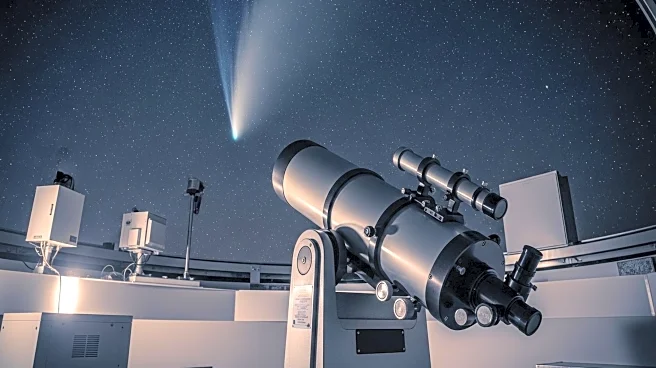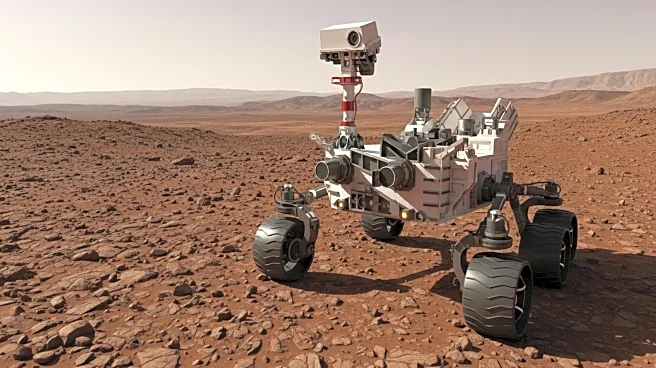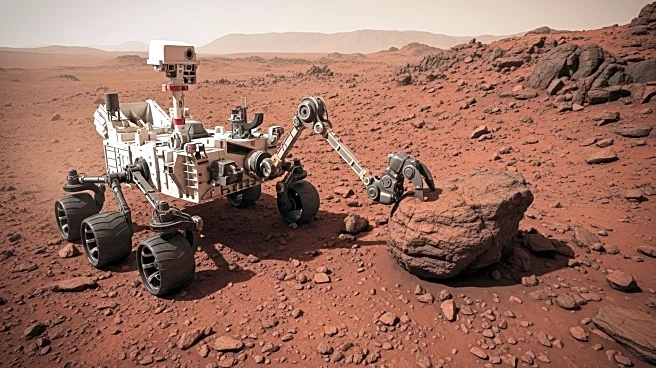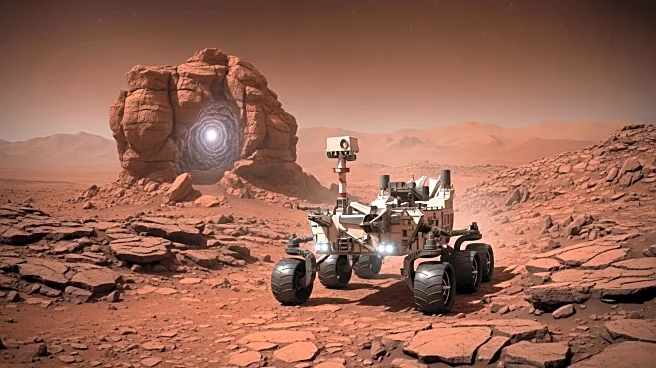What is the story about?
What's Happening?
The Mars Reconnaissance Orbiter, equipped with the HiRISE camera, is set to capture images of the interstellar object 3I/ATLAS as it passes by Mars on October 3, 2025. The object will be at a distance of 29 million kilometers from the orbiter, allowing the HiRISE camera to image it with a resolution of 30 kilometers per pixel. This imaging is part of a broader effort to understand the physical characteristics of 3I/ATLAS, including its nucleus size, which has been a subject of scientific inquiry. Recent data from the Zwicky Transient Facility (ZTF) and the Hubble Space Telescope have shown a brightening of 3I/ATLAS, attributed to mass loss and the presence of ice fragments. The upcoming imaging by the Mars Reconnaissance Orbiter is expected to provide more precise data on the nucleus size, potentially offering insights into the object's composition and origin.
Why It's Important?
The imaging of 3I/ATLAS by the Mars Reconnaissance Orbiter is significant for several reasons. It represents a rare opportunity to study an interstellar object up close, which could enhance our understanding of such objects' physical properties and origins. The data obtained could have implications for astrophysics, particularly in understanding the heliosphere's role in protecting Earth from interstellar threats. Additionally, the findings could inform future space missions and the search for extraterrestrial life by providing insights into the composition and behavior of interstellar objects. The scientific community stands to gain valuable information that could reshape current theories about the solar system and its interactions with interstellar space.
What's Next?
Following the imaging of 3I/ATLAS, scientists will analyze the data to determine the object's nucleus size and other characteristics. This analysis could lead to new hypotheses about the object's origin and trajectory. The results may also prompt further observations and studies by other space agencies, including NASA, ESA, and the Chinese Space Agency, which have orbiters equipped with cameras near Mars. The scientific community will likely engage in discussions and publications to interpret the findings and explore their implications for our understanding of interstellar objects and their potential impact on the solar system.
Beyond the Headlines
The study of 3I/ATLAS could have broader implications beyond immediate scientific findings. It raises questions about the frequency and nature of interstellar objects entering the solar system, which could influence future space exploration strategies and planetary defense initiatives. The research may also contribute to the ongoing debate about the existence of extraterrestrial life and the potential for interstellar travel. As scientists continue to explore these questions, the findings from 3I/ATLAS could play a crucial role in shaping the future of space science and exploration.
AI Generated Content
Do you find this article useful?
